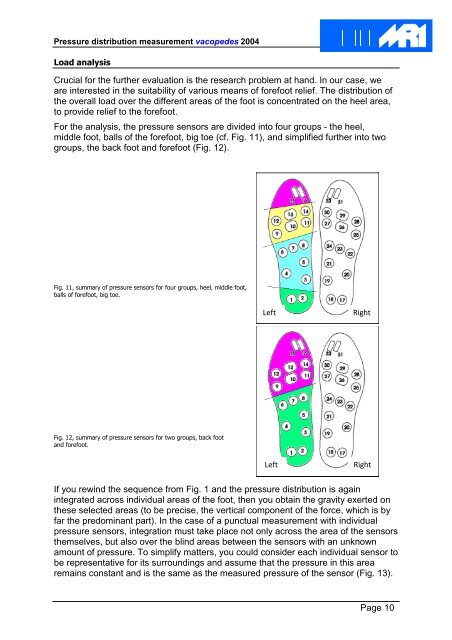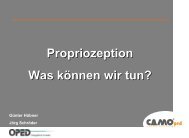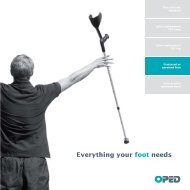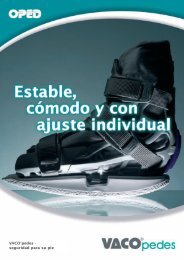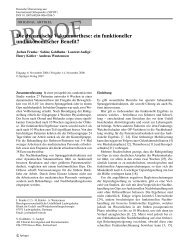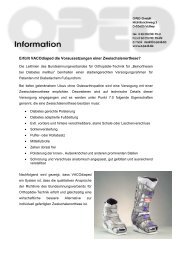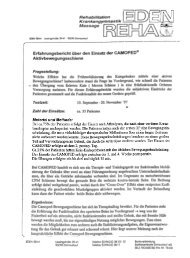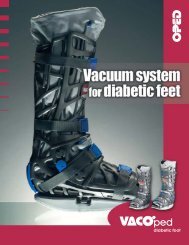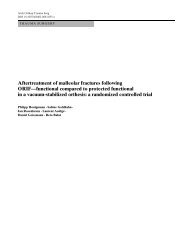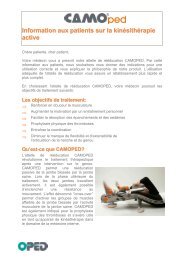Biomechanikstudy_MRI_AKT-O_EN.pd - VACOped
Biomechanikstudy_MRI_AKT-O_EN.pd - VACOped
Biomechanikstudy_MRI_AKT-O_EN.pd - VACOped
- No tags were found...
You also want an ePaper? Increase the reach of your titles
YUMPU automatically turns print PDFs into web optimized ePapers that Google loves.
Pressure distribution measurement vacopedes 2004Load analysisCrucial for the further evaluation is the research problem at hand. In our case, weare interested in the suitability of various means of forefoot relief. The distribution ofthe overall load over the different areas of the foot is concentrated on the heel area,to provide relief to the forefoot.For the analysis, the pressure sensors are divided into four groups - the heel,middle foot, balls of the forefoot, big toe (cf. Fig. 11), and simplified further into twogroups, the back foot and forefoot (Fig. 12).Fig. 11, summary of pressure sensors for four groups, heel, middle foot,balls of forefoot, big toe.LeftRightFig. 12, summary of pressure sensors for two groups, back footand forefoot.LeftRightIf you rewind the sequence from Fig. 1 and the pressure distribution is againintegrated across individual areas of the foot, then you obtain the gravity exerted onthese selected areas (to be precise, the vertical component of the force, which is byfar the predominant part). In the case of a punctual measurement with individualpressure sensors, integration must take place not only across the area of the sensorsthemselves, but also over the blind areas between the sensors with an unknownamount of pressure. To simplify matters, you could consider each individual sensor tobe representative for its surroundings and assume that the pressure in this arearemains constant and is the same as the measured pressure of the sensor (Fig. 13).Page 10


